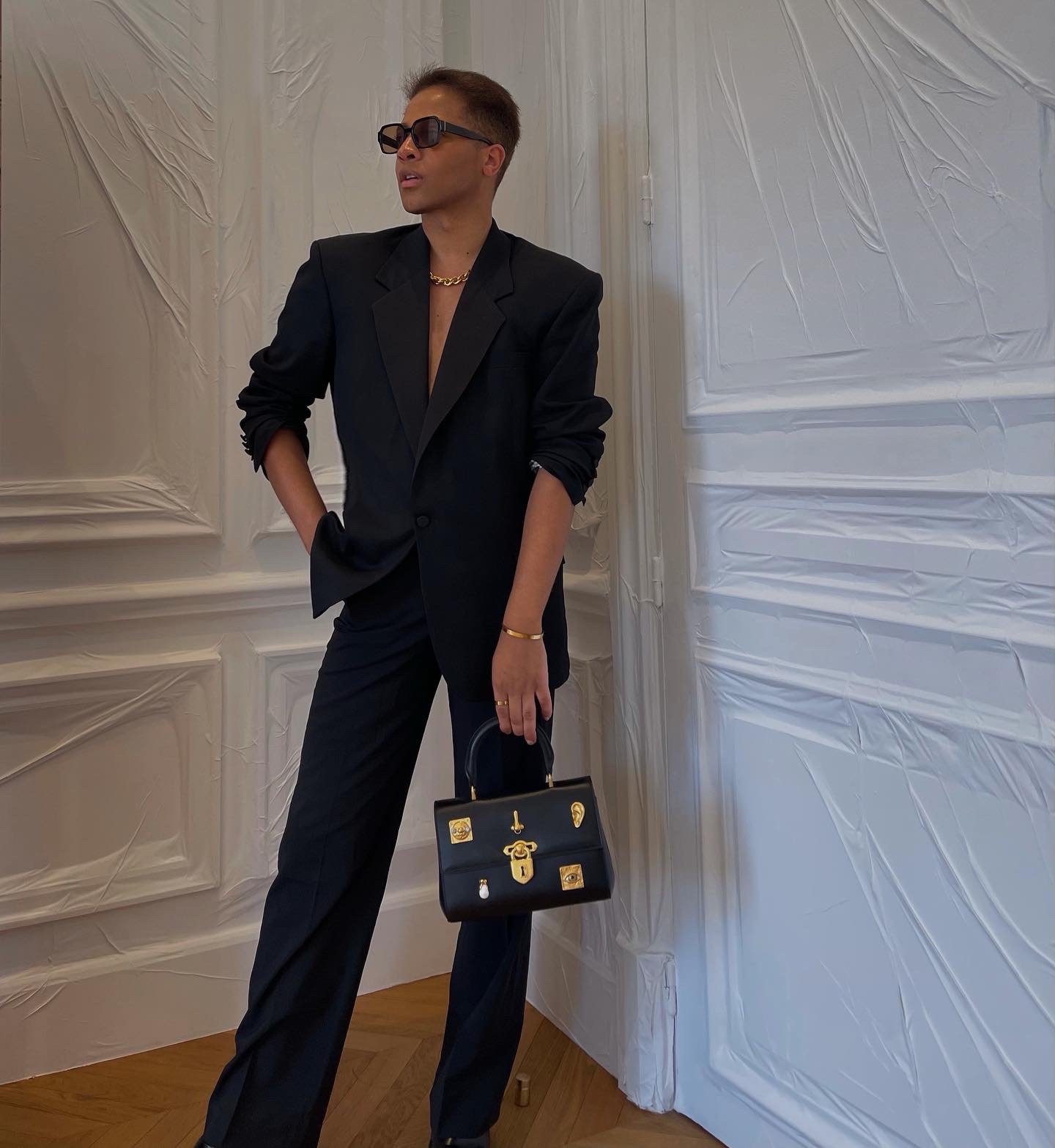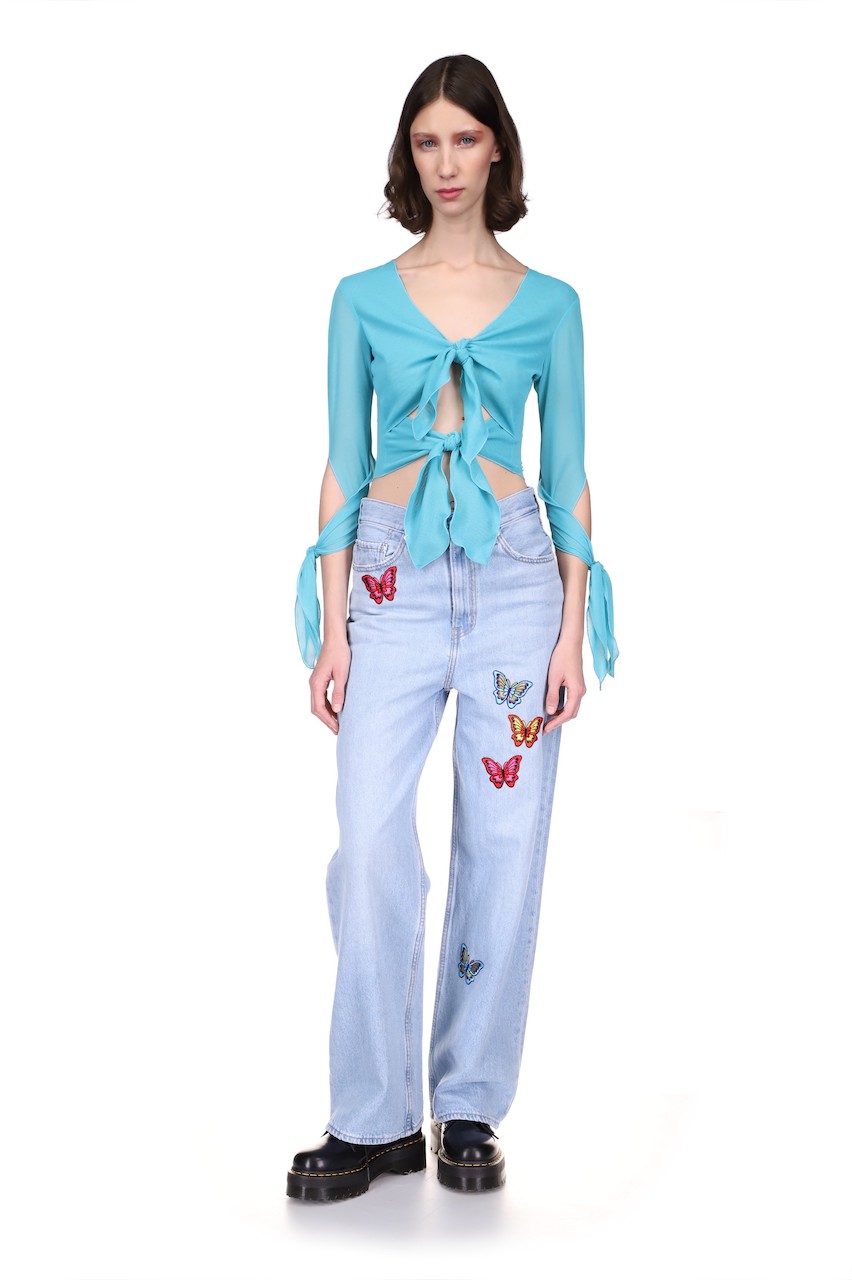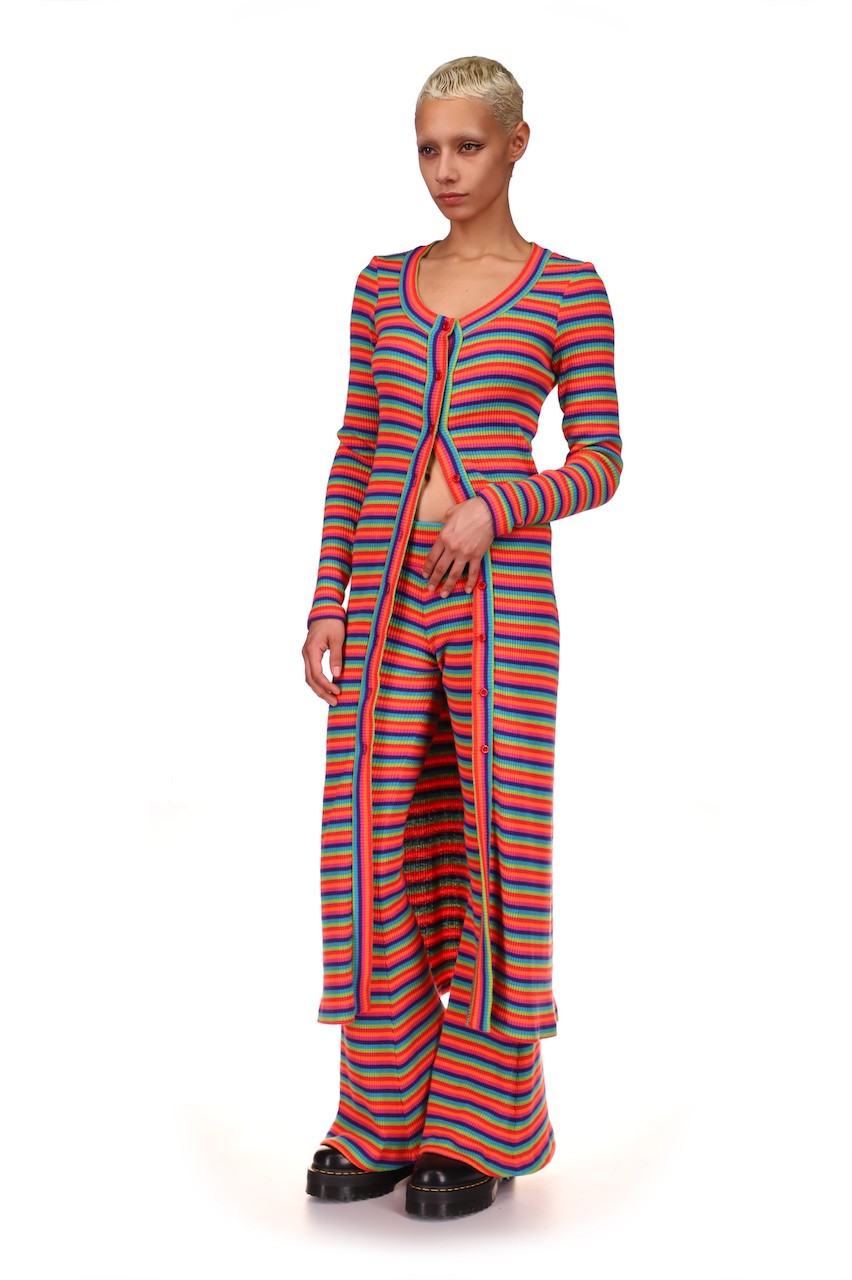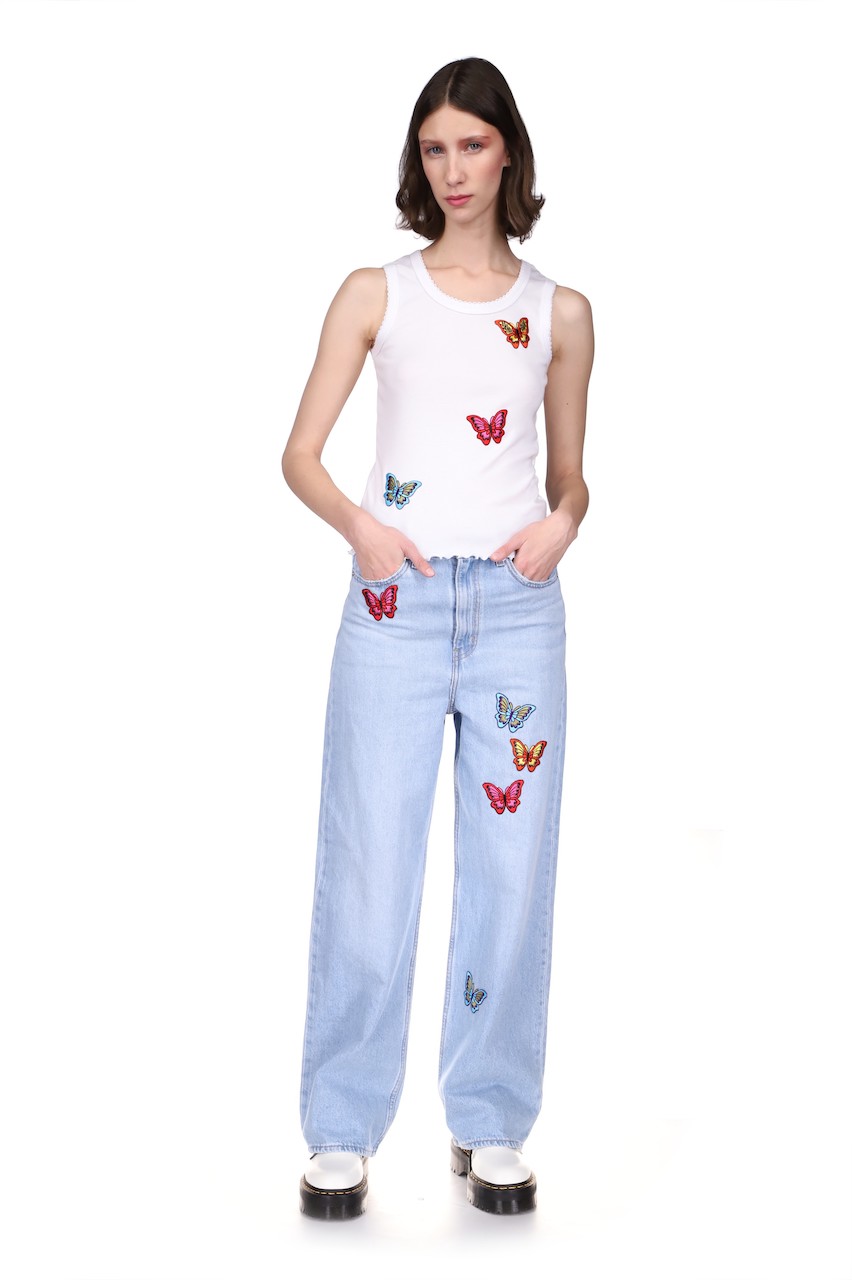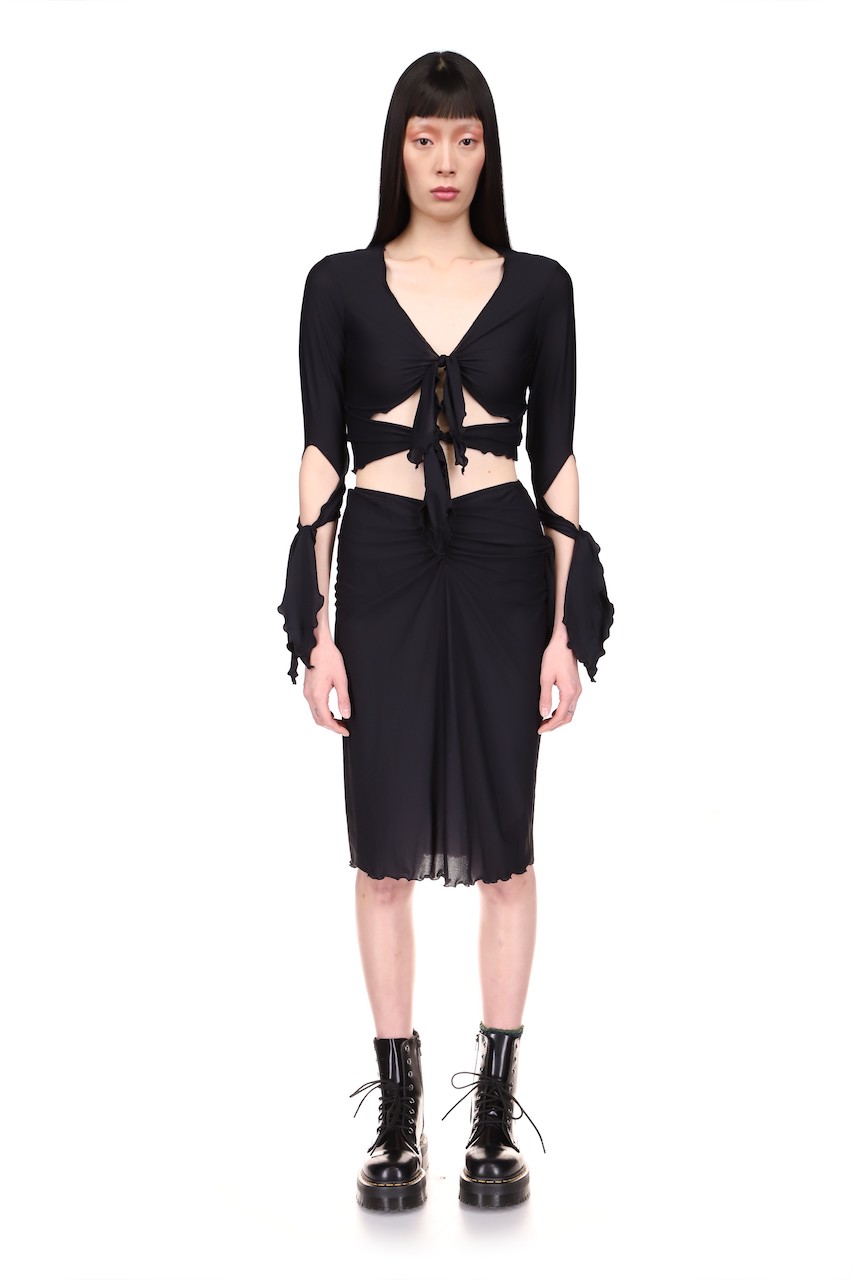
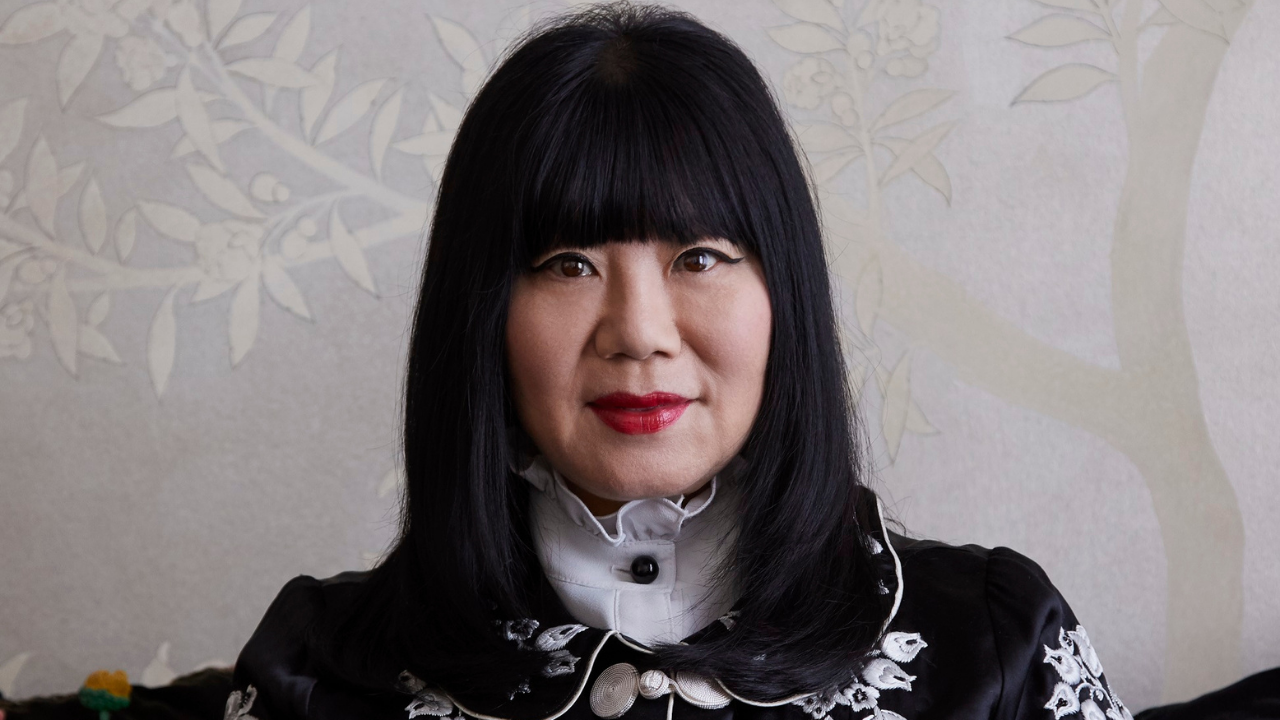
“The ’90s was one of my favorite times. To me, fashion was so exciting then,” fashion designer Anna Sui tells GRAZIA USA in a new interview. When the iconic New York designer, who launched her eponymous label in 1981, was approached by luxury fashion and high-end streetwear e-retailer Ssense to collaborate on a capsule collection, and she knew precisely where to draw inspiration from.
The capsule revisits Sui’s iconic Spring 1993 and 2001 collections, and features bold patterns, her now-iconic meshy tops, butterfly patchwork denim, and knotted cutout designs. She also pays homage to the supermodels who first donned the original designs on the runway, by naming the new pieces after the likes of Gisele Bündchen, Devon Aoki, and Liisa Winkler.
Over the years her line has evolved and ventured into new markets, including footwear, cosmetics, fragrances, eyewear, jewelry, accessories, home goods, and more, but two things remain consistent — her devotion to maximalism and grunge. The Ssense garments arrive at a perfect time as the new generation craves a blast from the past. Specifically, the grunge subculture, or as Gen Z’ers coined it on TikTok, “grungecore,” where today’s stars like Olivia Rodrigo regularly sports Sui’s maximalist designs.
Ahead, Sui talks about the “realness” of the ’90s, her favorite runway moment with supermodels Linda Evangelista, Christy Turlington, and Naomi Campbell and more. The Anna Sui x Ssense collaboration is available to shop now exclusively on Ssense.com.
GRAZIA: How did the collaboration with Ssense come about?
Anna Sui: They approached us. Ssense has been buying my collection for a couple of seasons now, since resort last year. And I think that they’ve received an excellent response. They have just such a great buying team that knows their customer. I think they always had in their mind to revisit some of my ’90s and our Y2K pieces. And so, we’ve been chatting about it and interspersing little bits at events. Then we just decided to do a full-on drop with it. And it’s been fun to do.
G: How do you feel about the Y2K/late ’90s resurgence in fashion? How does that resonate with you?
AS: I find it exciting that being, of course, was one of my favorite times. And to me, fashion was so exciting then. I had started my collection in the ’80s and was doing fine but not getting much recognition. And then, in the ’90s, everything switched. I used to hang out with Steven Meisel and a bunch of the models socially, and I realized that they were changing how they were dressing. They weren’t head-to-toe Chanel and Versace anymore. They were wearing a vintage top with jeans, and there was one model making chokers. I thought, “Well, maybe there’s a chance for me.” And it just all organically happened that they wanted clothes for their generation, not wearing mommy’s clothes. It all just went along with the fantastic music that was going on. All these great bands were playing, and some of the models were even dating the guys in the bands. There was this whole indie thing going on. Many of the young actors in the movies, the indie movies, were dating models. It was just very, very organic.
G: You’ve been a maximalist your whole career. What do you love most about the extravagance of dressing up and putting all your looks together?
AS: It’s how I’ve always thought about clothes. I mean even the Trinity and those little birthday dresses with the birthday bags from my childhood. My mom would make me a birthday dress every birthday, and I would tell her what color. We would shop for the fabric, and then I’d always have to have a matching cake. And so, it was a natural thing when I was thinking about outfits for the finale. I thought, “Oh, let’s do birthday, girls.” It’s just, I guess, how I’m wired. I love tons of accessories and putting a tiara on top.
G: Are you on TikTok at all?
AS: A little bit. Not as much as Instagram, but a little bit.
G: There’s a “new” aesthetic right now going on called grunge core. You pull a lot of inspiration from the New York grunge scene, also seen in this collaboration with Ssense. How do you feel about the whole grunge scene making a comeback with the new generation?
AS: It was the last time things felt real. Today’s generation is looking for that moment; they’re looking for something more authentic. Like Olivia Rodrigo already wore the tops and dresses from the Ssense collection right away. It just resonated with her. And we need that.
G: These past two years have been rough, given the pandemic. As a longtime New Yorker, do you see a shift in the feel of the city from pre-pandemic till it is now? Do you feel the industry has become harder for emerging designers to break out?
AS: It gave a moment for creativity, new ideas, and new ways of doing things to break through. Look at what’s going on, on Orchard Street and Dimes Square. That whole area is so fun to see that these people are so creative. It’s a movement going on, and we haven’t seen that, especially in New York, in a long time because financially and economics didn’t allow for it. People are now finding these little storefronts near Chinatown and opening these little popup stores. And I think it’s so great. And that’s the way a movement starts, and that’s how new trends start.
G: How did you land on pulling inspiration from your archive spring 2001 and 1993 collections?
AS: There has been a lot of interest. It surprises me to see so many people still posting pictures from those collections. And then, of course, the Metropolitan Museum of Art had the baby doll dresses in exhibitions three times. They were then followed by my retrospective museum exhibit at the MAD Museum. These were all things that were happening. And it was fun because we never really go back and look at those styles, let alone try to find the old patterns and recreate the fabrics. In some cases, it was sad because all those fabric companies were gone. They were all made in America. Every single one of those fabrics was made in America back then.
G: Oh wow. So the pieces with Ssense are all made in America?
AS: Yes, I was trying to find a good substitute for those beautiful fabrics and those lovely manufacturers I used all those years ago. We managed to find some, but some we couldn’t do. It’s been interesting to see the significant change in clothing production since the ’90s. Although I still make everything in New York, which is how I started, it’s what I know. It’s like extended family. I’ve been working with a lot of the same people all these years. And I want to keep everybody busy and working. And so, we use the same pleater. We use the same employee reprint person. We use the same resources as the ones that have stayed in business. We keep working with them.
G: Is there a piece from the collection that resonates with you that you have a unique tie with?
AS: I really like the little mesh tops that tie. I’ve done them a few times. I did another punk collection in 2004, and I resurrected those because one fabric company had incredible fishnet holes. And so, we made some of those tops in this holey fishnet.
G: What’s your favorite runway memory from the early ’90s until the mid-2000s. I know that’s a broad range of time, but what comes to mind?
AS: So many shows, that’s 60 shows! [laughs] I guess it’ll have to be the moment when Linda Evangelista stopped on the runway, and Christy Turlington and Naomi Campbell followed. They just stood there, and it was all spontaneous. No one had talked about it, and Linda just glanced at them, and they did it. Again, it was very real. And it just brought down the house when they did that.








